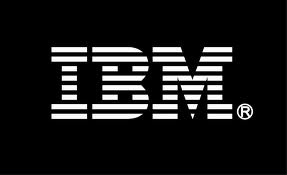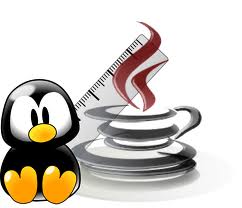| Biz ancak bu sayfa şu anda Google Translate kullanarak çevrilen makine, mümkün olduğunca çok dilde web sitemizi lokalize için çaba. | yakın |
-
-
ürünler
-
kaynaklar
-
destek
-
şirket
-
Giriş Yap
-
.phd Dosya Uzantısı
Geliştirici: IBM/CyberLinkDosya türü: Portable Head Dump File/PhotoDirector Project FileEğer biten bir dosya uzantısına sahip bir dosya var çünkü buradayız .phd. Dosya uzantısı ile Dosyaları .phd sadece belirli uygulamalar tarafından başlatılabilir. Bu mümkün .phd dosya hepsi görülebilmesini anlamına gelmez demektir hangi veri dosyaları yerine belge veya medya vardır.Bir nedir .phd dosya?
.phd dosya uzantısı dijital fotoğrafları düzenlemek için kullanılan program, PhotoDirector tarafından kullanılır. Onlar programını kullanarak ithal görüntüler veya düzenlenebilir görüntülere ya başvurmak için kullanılır bu uzantılı dosyalar fotoğraf proje dosyaları denir. Bu dosya uzantısı kamera formatlarını çeşitli destekler. .phd dosyaları da taşınabilir Heap Dökümü formatındaki dosyalar ve onlar Javaheap esas Java Virtual Machine tarafından oluşturulan dosyaları dökümü yaratılmasında büyük rol oynamaktadır. Bu dosyalar uygulamada oluşan hataları ayıklamak için kullanılabilecek Java ilgili nesneleri içerir. Dosya uzantısı da Punch tarafından kullanılır! CAD planı dosyaları olarak ve 3D formatında modeli evleri ve manzara oluştururken uygulamasını kullanarak kullanıcılar için gereklidir. Ayrıca Tomb Raider video oyununda bir oyun seviyesi dosyası olarak kullanılmaktadır. Böyle çokgen Veritabanı ve ViewChoice gibi diğer uygulamaları da faydalanmak .phd dosya uzantısı.Bir açmak için nasıl .phd dosya?
Bir başlatın .phd dosyası, ya da PC üzerinde herhangi bir diğer dosya ile çift tıklatarak. Dosya ilişkilerini doğru kurmak ise, pinti uygulama açmak için .phd dosya açacaktır. Bu doğru bir uygulama indirmek veya satın almak gerekebilir mümkündür. Bu PC'nizde doğru uygulamayı olması da mümkündür, ama .phd dosyaları henüz onunla ilişkili değildir. Bu durumda, açmaya çalıştığınızda .phd Dosya, o dosya için doğru olanı hangi uygulama Windows'u söyleyebilirim. O andan itibaren, bir açılış .phd Dosya doğru uygulamayı açılacaktır. .phd Dosya dernek hataları düzeltmek için buraya tıklayınBir açık uygulamaları .phd dosya
 CyberLink PhotoDirector 3
CyberLink PhotoDirector 3CyberLink PhotoDirector 3
CyberLink Photo Director 3 is a program which edits and organizes the images of the user. It can remove anything unwanted portion of the images. The artist may also improve the looks of anyone in the image by using one of its features called the “beautifierâ€Â. With this option, the user may remove wrinkles, smoothen the skin, make the eyes more tantalizing and much more. The user may also utilizer a tool namely "Tooth Brush" to whiten the teeth of a person in the image. There are also numerous templates to choose on. For fish eyed distortions, there are available tools such as the Lens correction tool. This software runs on Microsoft platform like Windows XP, Window Vista, and Window 7. The processor should not lower than 3 GHz, 2 GB RAM, At least 1 GB space on the Hard Drive and a Video Graphics Array card with at least 128 MB of memory. IBM HeapRoots
IBM HeapRootsIBM HeapRoots
HeapRoots is a tool written in Java used for analyzing heap dumps. It is an unofficial utility though and will be provided “as-is”. It is a utility that will help you obtain solutions for memory problems, but it is not the solution to your main problem. HeapRoots will analyze a heap dump base on objects, object type, heap roots, heap gaps that refer to spaces in between objects, and references from and to a given object. The outcome is featured as a flat list or an indented tree. It can be filtered and sorted out. IBM HeapAnalyzer
IBM HeapAnalyzerIBM HeapAnalyzer
IBM HeapAnalyzer is a graphical utility that lets you detect possible Java heap leaks by using its heuristic search engine and Java heap dump analysis in Java programs. Java heap areas give definition to classes, objects and arrays. When the Garbage Collector allocates storage areas in the heap, an object continuously lives while its reference exists somewhere in the JVM’s active state making it reachable. When the active state stops referencing the object, it becomes garbage. It can be reclaimed for later reuse. For reclamation to take place, the Garbage Collector must come up with a potential finalizer and secure that internal JVM resources associated with the object will be returned to the pool for such resources. Java heap dumps are the snap shots of Java heaps at certain times. HeapAnalyzer analyzes these dumps by parsing them, constructing directional graphs, restructuring them into directional trees and operating the heuristic search engine. Some of the features of HeapAnalyzer are size recommendation of kCluster, list of suspects for Java heap leaks, gap list among allocated arrays/classes/objects, search engine for Java classes/objects/arrays, list of objects, arrays and classes by type name, address, object name, size, child size, child number and frequency, available heap space list by size, Java heap dump tree view and saving and loading of processed Java heap dumps.uyarı bir kelime
Üzerinde uzantısını dikkatli olun .phd dosyaları veya diğer dosyaları. Bu dosya türünü değiştirmek olmaz. Sadece özel dönüştürme yazılımı başka bir dosya türü bir dosyayı değiştirebilirsiniz.Bir dosya uzantısı nedir?
Bir dosya uzantısı Dosya sonunda üç veya dört karakter kümesidir, bu durumda, .phd. Dosya uzantıları olduğunu ne tür bir dosya size, ve hangi programları açabilirsiniz Windows'u söyle. Eğer dosyayı çift tıkladığınızda, program otomatik olarak başlatılır, böylece Windows sık sık, her dosya uzantısı için varsayılan program ilişkilendirir. Bu program bilgisayarınızda artık zaman ilişkili dosyayı açmaya çalıştığınızda, bazen bir hata alabilirsiniz.Yorum bırakmak

